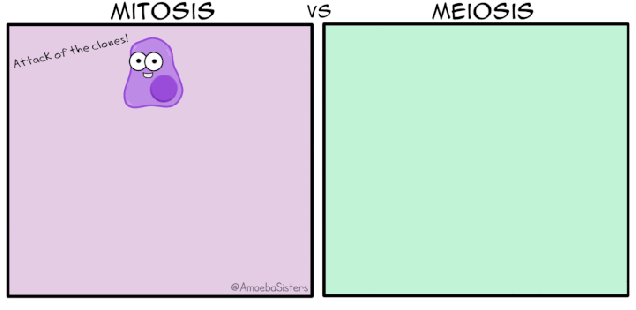 Intro to Meiosis with a comparison to Mitosis
Intro to Meiosis with a comparison to Mitosis
- Intro to Meiosis: 7LL Google Slides Public
- Intro to Meiosis: 7LL Guided Notes Public Link
- Mitosis vs Meiosis 7LL Cheat Sheet, Fill in the Blank, & Cut & Paste Review Activity Public Link
- CK12: Meiosis Resources
Amoeba Sisters Videos:

